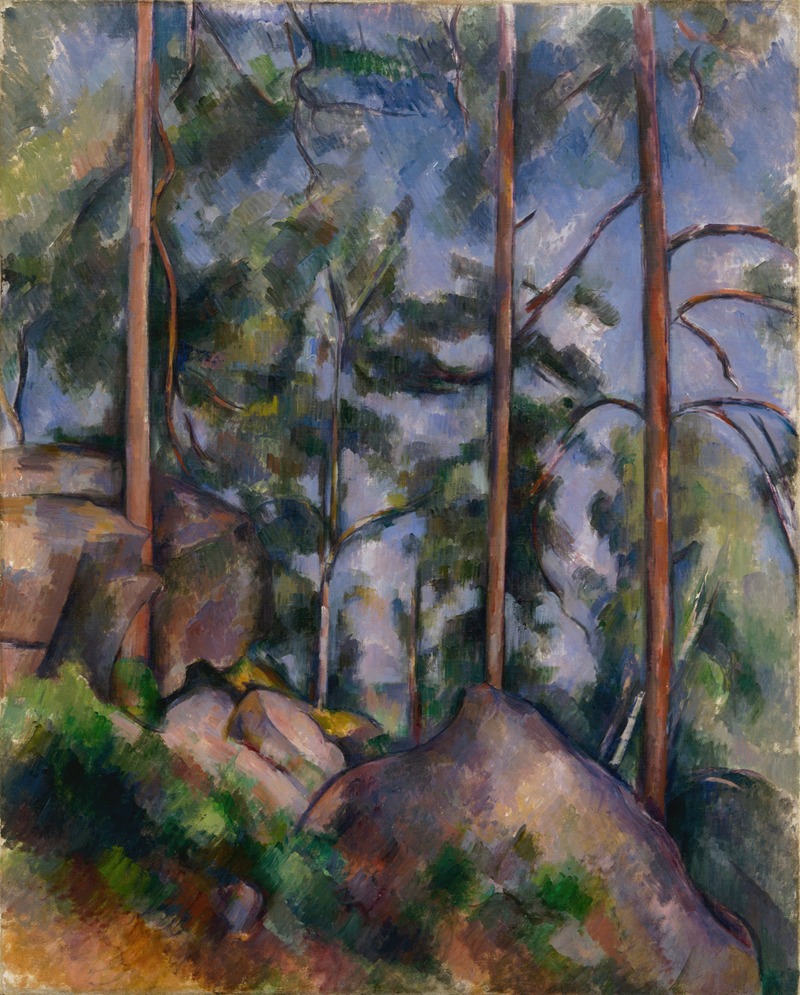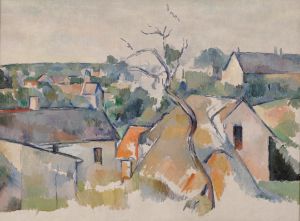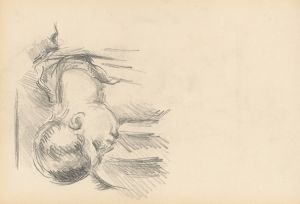
Pines and Rocks
A hand-painted replica of Paul Cézanne’s masterpiece Pines and Rocks, meticulously crafted by professional artists to capture the true essence of the original. Each piece is created with museum-quality canvas and rare mineral pigments, carefully painted by experienced artists with delicate brushstrokes and rich, layered colors to perfectly recreate the texture of the original artwork. Unlike machine-printed reproductions, this hand-painted version brings the painting to life, infused with the artist’s emotions and skill in every stroke. Whether for personal collection or home decoration, it instantly elevates the artistic atmosphere of any space.
Paul Cézanne's Pines and Rocks is a notable work by the French Post-Impressionist painter, created during the later years of his career. This painting exemplifies Cézanne's innovative approach to landscape painting, which played a pivotal role in the transition from 19th-century Impressionism to the modern art movements of the 20th century. While the exact date of the painting is not definitively documented, it is generally believed to have been produced in the late 19th or early 20th century, a period when Cézanne was deeply engaged in exploring the structure and form of natural landscapes.
The composition of Pines and Rocks reflects Cézanne's fascination with the rugged terrain of Provence, the region in southern France where he spent much of his life. The painting features a dense arrangement of pine trees and rocky outcrops, rendered with Cézanne's characteristic use of geometric forms and layered brushstrokes. His technique emphasizes the solidity and permanence of the natural world, moving away from the fleeting effects of light and atmosphere that were central to Impressionism. Instead, Cézanne sought to capture the underlying structure of the landscape, a pursuit that would later influence artists such as Pablo Picasso and Georges Braque in the development of Cubism.
Cézanne's palette in Pines and Rocks is dominated by earthy tones and muted greens, which convey the harmony and tranquility of the natural setting. The interplay of light and shadow across the rocks and trees adds depth and dimension to the scene, while the simplified forms suggest a deliberate abstraction of nature. This approach reflects Cézanne's belief that all forms in nature could be reduced to basic geometric shapes, such as cylinders, spheres, and cones.
The painting is housed in the collection of the Hermitage Museum in Saint Petersburg, Russia. It is one of several works by Cézanne in the museum's collection, showcasing the artist's mastery of landscape painting and his enduring influence on the art world. Pines and Rocks is often studied as an example of Cézanne's ability to balance representation and abstraction, making it a significant piece in the history of Western art.
As with many of Cézanne's works, Pines and Rocks invites viewers to engage with the painting on multiple levels, appreciating both its aesthetic qualities and its contribution to the evolution of modern art.


















